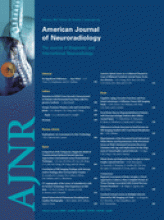Michael J. Alexander and Robert F. Spetzler, eds. New York: Thieme: 2006. 224 pages, 215 illustrations, $159.95.
Vascular disease of the nervous system is much less common in children than in adults. As such, it represents only a small part of the practice of most pediatric specialists. By the same token, children would represent a small part of any adult vascular practice. The spectrum of diseases that afflict the nervous system in children is vastly different from that seen in adults; therefore, managing these problems in children represents an equal challenge to the adult specialists as it does to the pediatric specialists. Pediatric Neurovascular Disease brings together a formidable list of experts in pediatric and adult neurosurgery, radiology, and neurology to present a balanced overview of an uncommon topic. The authors attempt to bridge the gap between adult vascular specialists, unaccustomed to children, and pediatric specialists, who may see little neurovascular disease.
The text is divided into 3 broad sections that include medical and diagnostic evaluations, surgical treatments, and endovascular treatments. The medical and diagnostic sections contain chapters on cerebrovascular development, neurovascular syndromes, etiology and management of stroke, and neuroangiography in children. The chapters on stroke and cerebrovascular development are very well done and will be of particular interest to neurosurgeons and neuroradiologists. The treatment sections present a thorough review of the surgical, radiosurgical, and endovascular management of pediatric neurovascular disorders. The chapters provide a balanced perspective between the various treatment options (ie, endovascular versus neurosurgery versus radiosurgery) despite the bias one might expect on the basis of the author’s professional background. Each chapter is further divided into useful sections. The images are, for the most part, of good quality and the legends are concise. Colored images and figures are found only in the center of the book, out of context, in a separate section. The lack of color plates and color-enhanced text within the chapters is notable and somewhat disappointing in a book of this caliber. The chapters also contain the author’s “pearls,” which are essentially highlights of portions of the text.
As noted throughout the text, virtually all the literature and experience cited as evidence to support one management scheme over another are based on evidence from the adult cerebrovascular literature that is being applied to children. Of course, notable exceptions include endovascular and surgical management of vein of Galen malformations and, perhaps, microsurgical and radiosurgical management of arteriovenous malformations. Only in these circumstances are there sufficient data to draw any conclusions regarding treatment and the various options in children.
I found the chapters on endovascular management to be an excellent overview of a promising but still-evolving treatment in children. Here too, the caveat of applying adult data is noted throughout, because there is not a sufficient body of evidence to define the role of endovascular treatment for neurovascular diseases in children, except as noted previously. Of course, this is quite predictable in the rapidly evolving endovascular field because new materials, techniques, and indications arise quickly. The rapidly changing endovascular field and the relative rarity of pediatric endovascular disease provide limited experience with any particular pediatric disease or therapy and, therefore, limited opportunity to demonstrate the durability necessary for a treatment intended for children.
Pediatric Neurovascular Disease is a valuable contribution to the literature because it fills a notable void. The text provides an excellent review of the current state of the art of the diagnostic evaluation and the medical, surgical, and endovascular treatment of neurovascular diseases in children. Hopefully, the endovascular treatments discussed will demonstrate the improved outcomes and reduced morbidity for other neurovascular diseases as it has for vein of Galen malformations. Despite the limited data on this rapidly evolving field, or perhaps precisely because the field is so new and rapidly evolving, this text will be of value to anyone involved in the care of vascular diseases of the nervous system in children.

- Copyright © American Society of Neuroradiology












